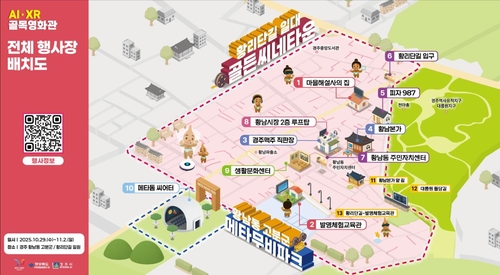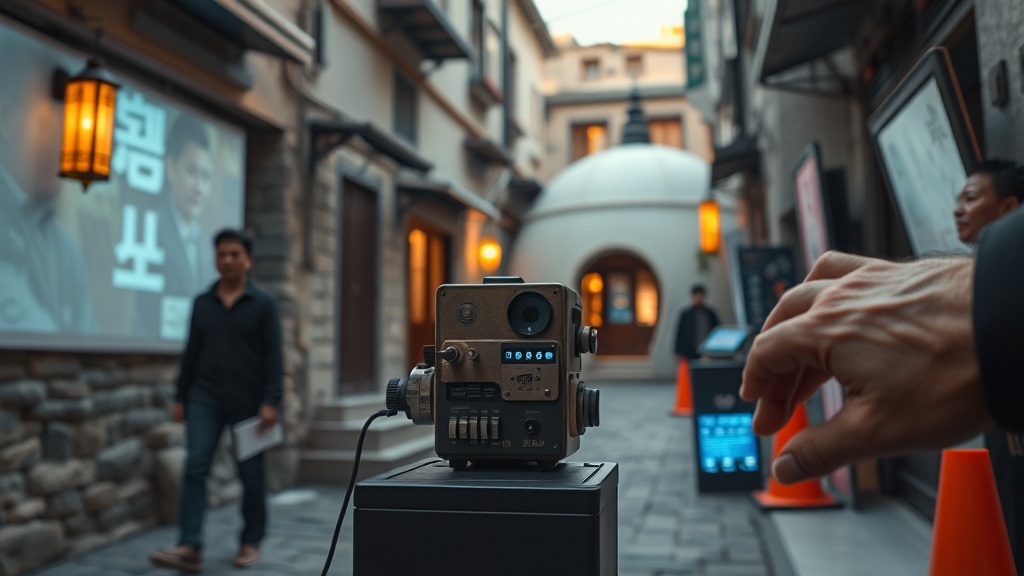A five-day media festival will take place in Hwangridan-gil and the Hwangnam-dong burial mound area.
Prize-winning AI videos and VFX screenings expand on-site, hands-on experiences.
Traditional culture meets cutting-edge technology, opening new possibilities for tourism and the local economy.
"Alleys Become Theaters" — A New Screening Experience in Gyeongju
Overview and schedule
The event runs October 29–November 2, 2025.
It is an AI·XR street cinema program organized by North Gyeongsang Province and Gyeongju City to mark the APEC leaders' meeting (APEC = Asia-Pacific Economic Cooperation).
The festival turns Hwangridan-gil's Golden Cine Town and the Hwangnam-dong tumulus area into a dispersed screening site called Meta Movie Park.
Programming includes 35 prize-winning works from an AI video contest, eight films produced by a regional research institute, and XR-enhanced versions of commercial films and dramas.
Gyeongju becomes a laboratory for digital moving-image art staged around historic sites.

Event background
At the core, this is a marriage of place and technology.
North Gyeongsang Province saw the APEC meeting as a window to promote the region while nurturing new cultural industries.
The program is an extension of the GAMFF (Gyeongsangbuk-do International AI & Metaverse Film Festival) expansion series and continues momentum from shows in cities such as Gumi and Pohang.
Choosing Gyeongju — the thousand-year-old Silla capital (Silla was an ancient Korean kingdom) — is a deliberate strategy to reinterpret heritage in a modern context.
Program composition
The emphasis is on variety.
The 35 award-winning AI videos showcase experimental and creative image languages.
Combined with XR- and VFX-enhanced commercial titles, dramas, and eight research-institute productions, the festival widens audience choices.
Venues are organized by theme so the entire neighborhood functions like a single, distributed cinema.
"The exhibition is both a technical showcase and a cultural rediscovery," says the festival's operating philosophy.
Arguments in favor
Expectations are high.
First, as an interactive exhibition, it offers hands-on exposure that can demystify AI and XR for the public and help normalize these technologies.
Meanwhile, aligning the festival with the APEC meeting brings short-term global exposure for Gyeongju's brand. Increased visitation can flow into local lodging, dining, and retail, producing tangible benefits for small businesses and the creative economy.
On top of that, production companies and creators working in VFX and XR gain a living lab and networking opportunities, which could strengthen the region's creative ecosystem over time.
The AI·XR street cinema is framed as a strategic project to raise the competitiveness of local cultural industries.
Specifically, three channels of benefit are plausible. First, tourism: timed with APEC VIPs and international visitors, the program produces immediate exposure that can translate into visitor spending. Second, content industry development: prizewinning AI works and research films act as experimental portfolios that might attract follow-up investment or co-productions, seeding local startups and freelance opportunities. Third, technical capacity and workforce: equipment and staff deployed for the event can leave a residue of local skills and infrastructure, especially if paired with training programs. In short, tourism, investment, and industry growth can combine to create sustained effects.
Arguments against
Concerns are real.
First, critics worry about balancing heritage and technology. Gyeongju is valued for its deep historical layers, and some fear that a tech spectacle could dilute the cultural essence.
Second, accessibility: AI and XR experiences tend to favor younger, tech-savvy visitors and can exclude older adults or those less comfortable with digital interfaces, undermining inclusivity.
Third, commercialization and residents' rights: large-scale events bring traffic congestion, noise, and temporary commercial zones that can disrupt daily life.
"Cultural preservation must come first," say community groups who want protection policies built into planning.
Technical safety is another issue. Large XR screenings and inflatable dome structures require rigorous safety protocols and tested systems. A malfunction could damage public trust and make future projects harder to stage. Moreover, if the festival remains a one-off spectacle, questions arise about sustainable returns: budgeted funds might leak to outside production houses based in major cities, and local small producers could be crowded out. Finally, institutional compliance matters: large events on heritage sites must follow strict preservation rules, and insufficient prior consultation risks social conflict.
Comparisons and case studies
Comparison helps.
Internationally, projects that reinterpret historic spaces with technology have produced mixed outcomes.
Successful examples often share community collaboration, clear accessibility plans, and sustainable financing. Failed cases typically neglect cultural sensitivities and prioritize commercial spectacle.
For example, a small European town used an annual light festival in its historic district to steadily increase visitors over three years; organizers minimized conflict with advance resident briefings, safety manuals, and local-vendor contracts. By contrast, an Asian city that invited a large external media company to stage a spectacle saw backlash when heritage protection rules were breached and residents were excluded. The lesson is clear: combining technology and culture can amplify benefits, but only if operations are transparent, legally compliant, and return value to the local community.
Operations and policy recommendations
Execution matters most.
First, set clear safety and preservation standards and strictly follow heritage regulations.
Second, ensure accessibility by deploying tech support teams and staffed guides, and by offering nontechnical experiences for older visitors.
Third, create mechanisms that guarantee economic returns for the locality.
Resident participation and transparent financial management are core conditions for long-term continuity.
Concrete steps include allocating a fixed share of the budget to support local artists and small businesses; partnering with regional universities for XR and AI training to build a talent pipeline; and introducing post-festival monitoring that reports tourism, economic, and social impacts publicly. With these institutional safeguards, the festival is more likely to evolve from a one-off showcase into a lasting local asset.

Outlook
Opportunities and risks coexist.
The AI·XR street cinema could become a model for rethinking cultural sites through technology.
However, turning potential into real gains requires an operating philosophy and institutional measures that protect local identity and daily life.
Technology is a tool, not the goal; the aim should be sustainable development of the local community.
Conclusion
The core issue is balance and longevity.
The AI·XR street cinema is an important experiment in combining Gyeongju's cultural heritage with new media to pilot a fresh tourism model.
Nonetheless, success depends on satisfying practical conditions such as heritage protection, resident input, accessibility, and local reinvestment of funds.
The event should do more than showcase technology; it should strengthen the local ecosystem.
In summary, the benefits include immersive tech experiences, tourism stimulation, and potential local industry growth. The risks are heritage dilution, accessibility gaps, commercialization harms for residents, and technical safety issues. With balanced design and institutional safeguards, those risks can be reduced and the festival can create long-term value.
How do you think Gyeongju should balance its thousand-year heritage with the demands of a high-tech media festival?